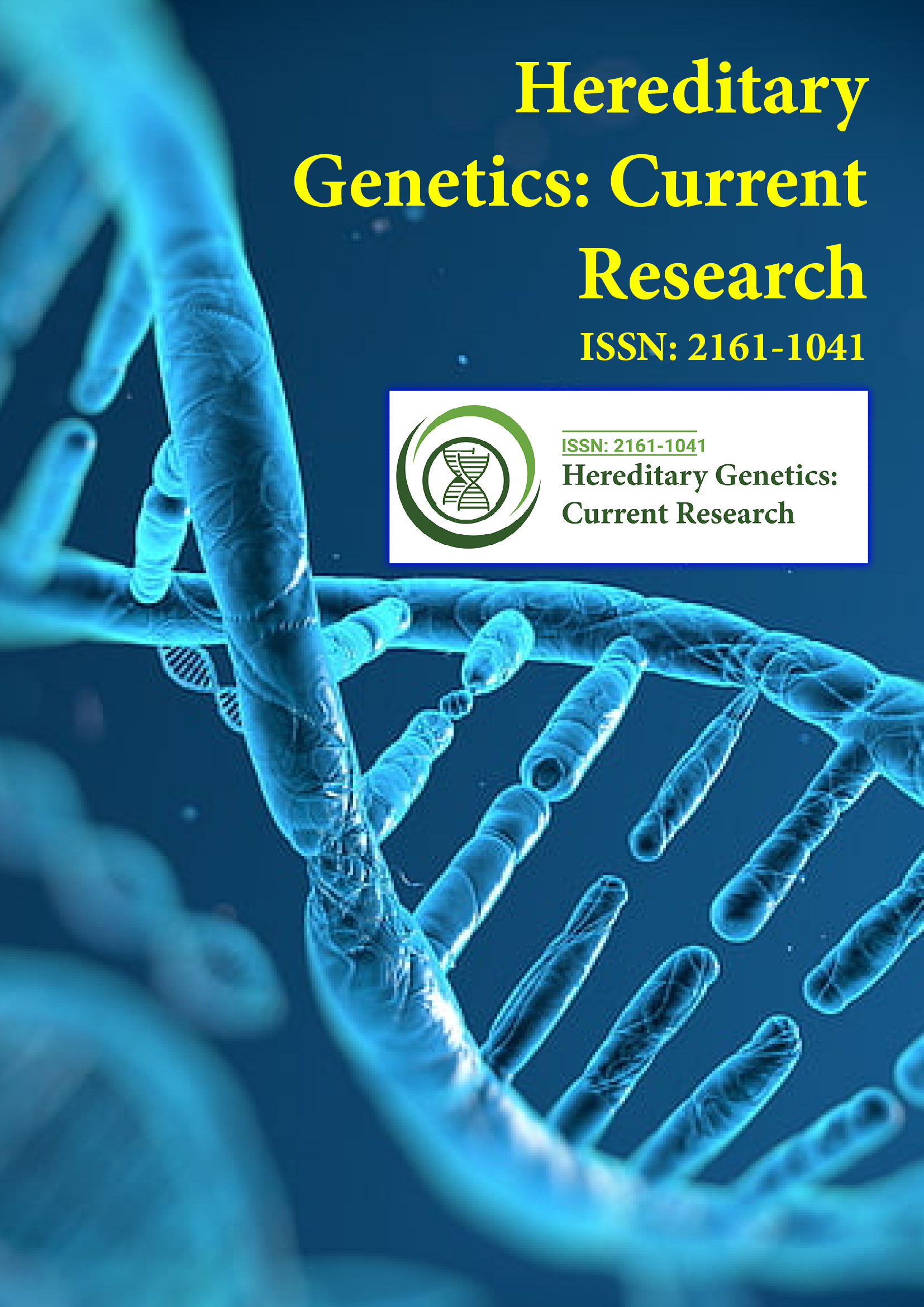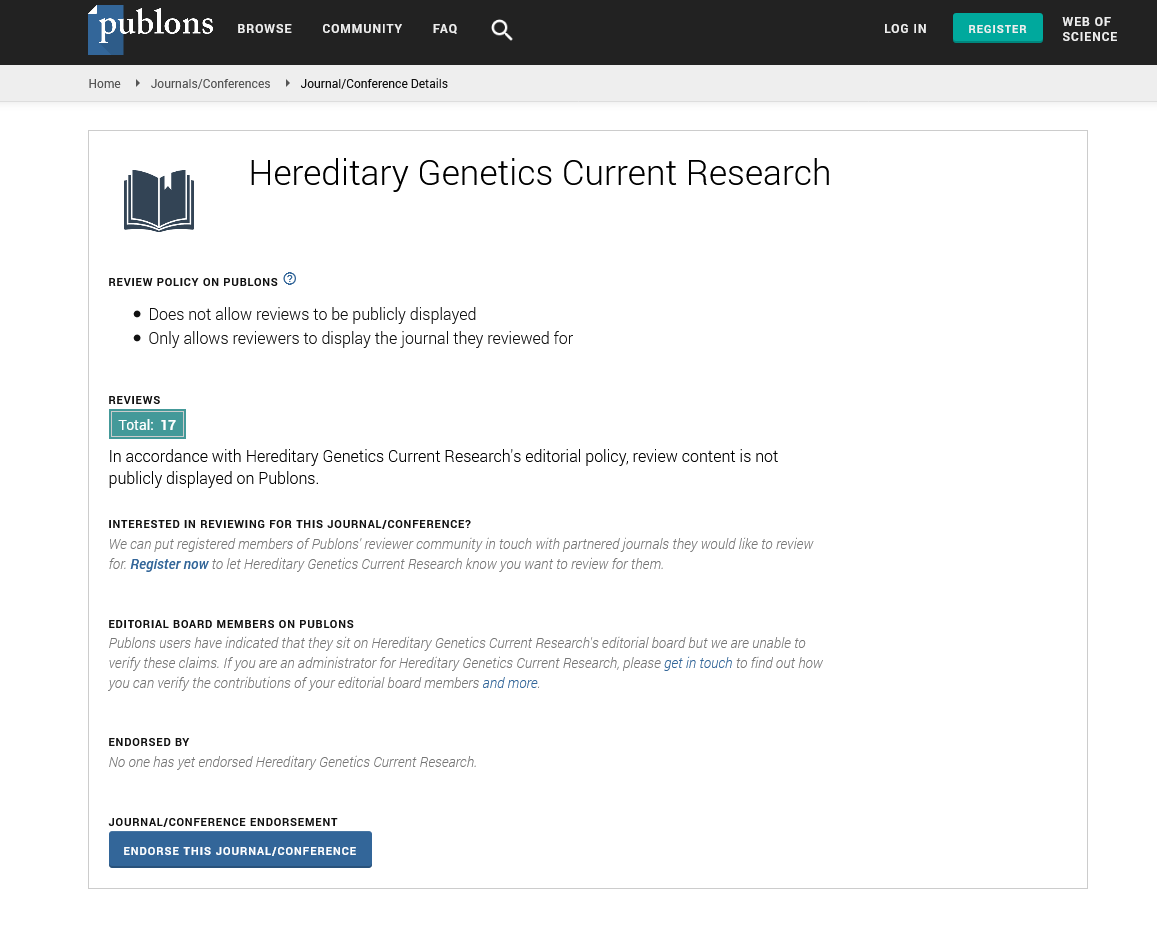Indexed In
- Open J Gate
- Genamics JournalSeek
- CiteFactor
- RefSeek
- Hamdard University
- EBSCO A-Z
- NSD - Norwegian Centre for Research Data
- OCLC- WorldCat
- Publons
- Geneva Foundation for Medical Education and Research
- Euro Pub
- Google Scholar
Useful Links
Share This Page
Journal Flyer

Open Access Journals
- Agri and Aquaculture
- Biochemistry
- Bioinformatics & Systems Biology
- Business & Management
- Chemistry
- Clinical Sciences
- Engineering
- Food & Nutrition
- General Science
- Genetics & Molecular Biology
- Immunology & Microbiology
- Medical Sciences
- Neuroscience & Psychology
- Nursing & Health Care
- Pharmaceutical Sciences
Commentary - (2022) Volume 11, Issue 5
Major Role of Population Genetics: Study of Evolution and Natural Selection of Genetics
Floris Smerlak*Received: 01-Aug-2022, Manuscript No. HGCR-22-18468; Editor assigned: 05-Aug-2022, Pre QC No. HGCR-22-18468(PQ); Reviewed: 18-Aug-2022, QC No. HGCR-22-18468; Revised: 25-Aug-2022, Manuscript No. HGCR-22-18468(R); Published: 01-Sep-2022, DOI: 10.35248/2161-1041.22.11.223
Description
Population genetics is a branch of biology that studies the genetic composition of biological populations as well as changes in genetic composition caused by various factors such as natural selection. Population geneticists achieve their objectives by creating abstract mathematical models of gene frequency dynamics, attempting to extract conclusions from those models about the likely patterns of genetic variation in actual populations, and testing those conclusions against empirical data. It is related to evolutionary biology. This branch of biology investigates phenomena such as adaptation, speciation, and population structure. Population genetics played an important role in the development of the modern evolutionary synthesis. Sewall Wright, J.B.S. Haldane, and Ronald Fisher were its primary founders, and they also laid the groundwork for the related discipline of quantitative genetics. Traditional population genetics has been a highly mathematical discipline, but modern population genetics includes theoretical, laboratory, and field work. Population genetic models are used for statistical inference from DNA sequence data as well as concept proof/disproof.
Population genetics is inextricably linked to the study of evolution and natural selection, and it is frequently regarded as the theoretical cornerstone of modern darwinism. This is because natural selection is one of the most important factors that can influence the genetic composition of a population. Natural selection occurs when some variants in a population out-reproduce others because they are better adapted to their environment, or are 'fitter.' Assuming that the fitness differences are at least partially due to genetic differences, the population's genetic makeup will change over time. Population geneticists hope to shed light on the evolutionary process and explore the implications of various evolutionary hypotheses by studying formal models of gene frequency change in quantitatively precise way. The mathematics of population genetics was developed at the start of the modern synthesis. Population genetics, according to authors such as Beatty, is at the heart of the modern synthesis. Most field naturalists believed that lamarckism and orthogenesis were the best explanations for the complexity they observed in the living world for the first few decades of the twentieth century. These ideas were discarded during the modern synthesis, and only evolutionary causes that could be expressed mathematically in the framework of population genetics were retained. There was agreement on which evolutionary factors might influence evolution, but not on their relative importance.
Between 1918 and 1937, population genetics made significant advances. Ronald Fisher, J.B.S. Haldane, and Sewall Wright worked on the relationship between evolution and genetics during this time period, employing new mathematical techniques such as statistical probability. Field research on the genetics of natural populations of Lepidoptera and Drosophila was conducted by E.B. Ford and Theodosius Dobzhansky. In general, this work demonstrated that newly discovered Mendelian genetics could be reconciled with Darwinian evolution. This laid the groundwork for the modern evolutionary synthesis, which occurred between about 1937 and 1953. Population geneticists worked on a variety of complex evolutionary problems in the second half of the twentieth century, including the evolution of sex, sexual selection, kin selection (altruism), mimicry, and molecular evolution. Population genetics techniques aid in determining the role of heredity and environment in developmental biology. When a mutation is strongly favoured and "pulls along" nearby genes on a chromosome, these ideas come into play. The genes being dragged along are ones that have previously received little selection. Positive selection causes the new mutation to reach fixation (being the only allele present at that locus in all members of the population) so quickly in a selective sweep that linked alleles can "hitchhike" and become fixed as well.
Citation: Smerlak F (2022) Major Role of Population Genetics: Study of Evolution and Natural Selection of Genetics. Hereditary Genet. 11: 223.
Copyright: © 2022 Smerlak F. This is an open-access article distributed under the terms of the Creative Commons Attribution License, which permits unrestricted use, distribution, and reproduction in any medium, provided the original author and source are credited.

